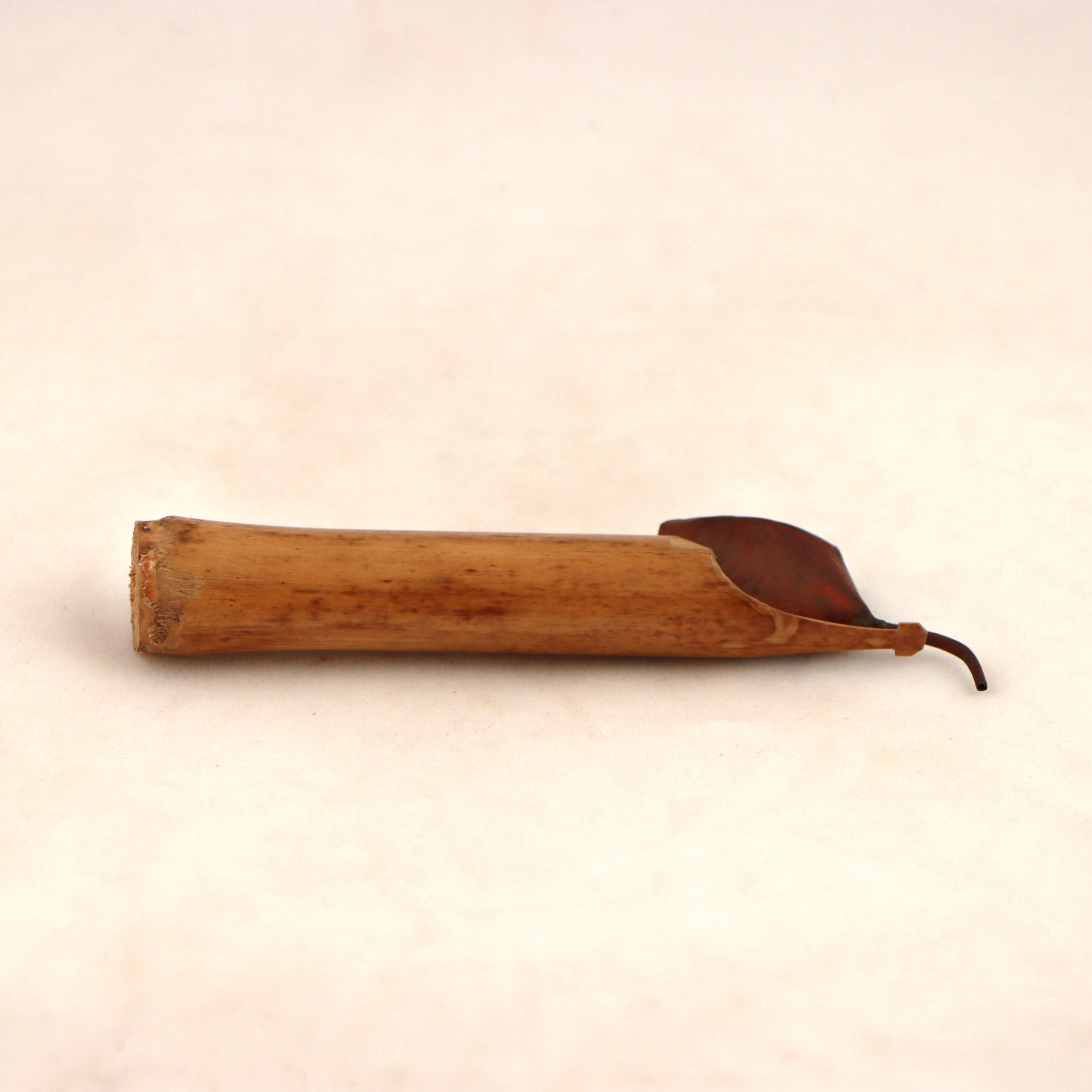Project Description
A tjanting is a tool used in making tulis batiks, traditional Javanese fabrics patterned with wax. The tjanting holds hot, liquid wax in the copper wax reservoir. When placed in the dye, the waxed area remains the color of the fabric. Tjantings have a variety of tips, sizes, and number of spouts to pattern the fabric in different ways. They are used very similarly to a pen.
When the Dutch colonized Indonesia, their goal was to make the most profit off the people that they could. Batiks were one form of profit for the Javanese, so the Dutch copied the designs and began printing batik patterns onto fabrics. These sold for far cheaper than the hand decorated fabrics, and the competition almost rendered the art form, and tjantings, obsolete. But the Javanese came up with a way to fight the competition. They created a tjap, or cap, which is essentially a copper stamp that is dipped into the hot wax and pressed onto the fabric to form a pattern. This innovation saved the art form. This tjanting, made in the twentieth century, after these events, exists because the Javanese were able to save their traditional art.
– Eowyn Medeiros, Class of 2025

